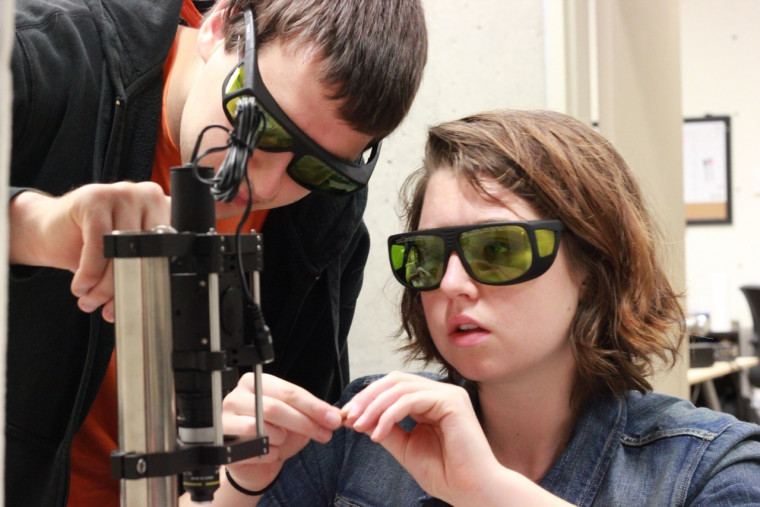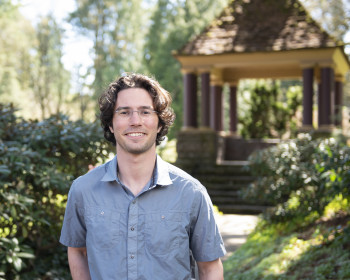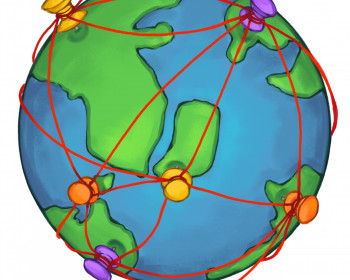Students present research findings at Northwest conference
Open gallery

Lewis & Clark students presented a diverse array of research findings to an audience of more than 500 people at the Murdock College Science Research Program’s recent Conference on Undergraduate Research.
Two student teams showcased their research discoveries with oral presentations: Leah Weston ’14 and Kyla Hamling ’14 discussed neuron development in zebra fish, while Amaya Lucas ’15 and Reuben Peterson ’14 talked about their use of holographic tweezers in studying microscopic bubbles.
Eight additional students assembled poster presentations for the conference, which addressed topics in the natural sciences and psychology. These included effects of invasive plant removal, atomic optics, energy generation and storage in metal oxide films, the role of games in children’s problem-solving skills, and the relationship between binge drinking and risky behavior, among others.
“The Murdock conference offers our students a wonderful opportunity to share their research with interested students and faculty members from other Northwestern colleges,” said Associate Professor of Physics Michael Broide. “Presenting a talk or poster to such a large audience forces students to sharpen their communication skills and enrich their understanding of their own research.”
Lewis & Clark collaborated with the M.J. Murdock Charitable Trust to host the 22nd annual conference in Vancouver, Washington. The college is one of 11 liberal arts institutions in the Pacific Northwest to receive funding from the Murdock trust for the purpose of strengthening faculty and student research efforts in the sciences. All student research that appeared at the conference was conducted during the summer and under the mentorship of faculty advisors as part of the John S. Rogers Science Research Program.
Katrina Staaf ’16 contributed to this story.
Science Opportunities
More Newsroom Stories
Public Relations is located in McAfee on the Undergraduate Campus.
MSC: 19
email public@lclark.edu
voice 503-768-7970
Public Relations
Lewis & Clark
615 S. Palatine Hill Road MSC 19
Portland OR 97219

